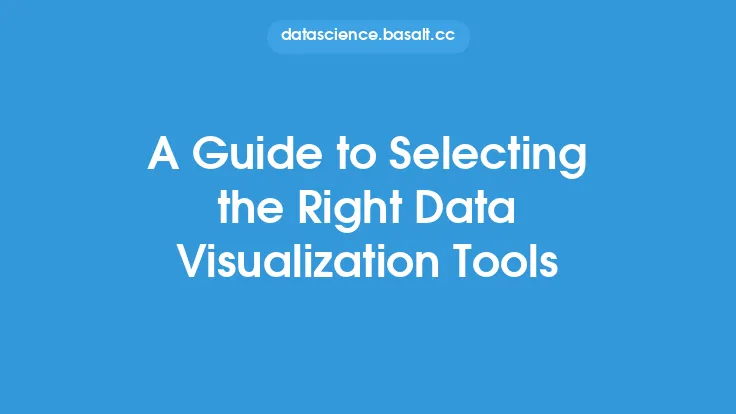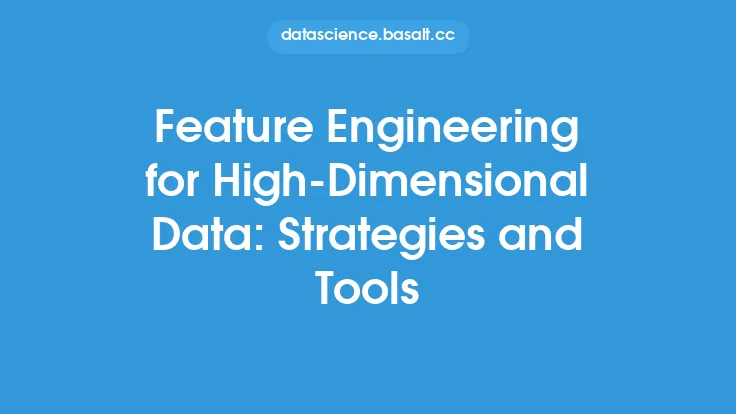As a data scientist, having the right tools at your disposal is crucial for efficient and effective data processing, analysis, and visualization. Data engineering tools are designed to help data scientists and engineers design, build, and maintain large-scale data systems, ensuring that data is properly ingested, processed, and stored. In this article, we will delve into the world of data engineering tools, exploring their importance, types, and applications, as well as providing an overview of the most popular tools used in the industry.
Importance of Data Engineering Tools
Data engineering tools play a vital role in the data science workflow, enabling data scientists to focus on higher-level tasks such as data analysis, modeling, and visualization. These tools help to automate many of the tedious and time-consuming tasks associated with data processing, such as data ingestion, data cleaning, and data transformation. By leveraging data engineering tools, data scientists can improve the efficiency and accuracy of their workflows, reduce the risk of errors, and increase the overall quality of their outputs.
Types of Data Engineering Tools
There are several types of data engineering tools, each designed to address specific needs and challenges in the data science workflow. Some of the most common types of data engineering tools include:
- Data ingestion tools: These tools are used to collect and transport data from various sources, such as databases, files, and APIs.
- Data processing tools: These tools are used to transform, aggregate, and analyze data, often using distributed computing frameworks such as Hadoop or Spark.
- Data storage tools: These tools are used to store and manage data, often using relational databases, NoSQL databases, or data warehouses.
- Data integration tools: These tools are used to combine data from multiple sources, often using ETL (Extract, Transform, Load) or ELT (Extract, Load, Transform) processes.
- Data quality tools: These tools are used to monitor and improve the quality of data, often using data validation, data cleansing, and data normalization techniques.
Popular Data Engineering Tools
There are many data engineering tools available, both open-source and proprietary. Some of the most popular tools include:
- Apache Beam: A unified programming model for both batch and streaming data processing.
- Apache Spark: A fast, in-memory data processing engine for large-scale data sets.
- Apache Hadoop: A distributed computing framework for processing large-scale data sets.
- Apache Kafka: A distributed streaming platform for high-throughput and scalable data processing.
- Amazon S3: A cloud-based object storage service for storing and retrieving large amounts of data.
- Apache Cassandra: A NoSQL database designed for handling large amounts of distributed data.
- Apache Hive: A data warehousing and SQL-like query language for Hadoop.
Data Engineering Tool Architecture
Data engineering tools often follow a specific architecture, designed to support scalability, flexibility, and performance. A typical data engineering tool architecture includes:
- Data sources: These are the systems or applications that generate data, such as databases, files, or APIs.
- Data ingestion layer: This layer is responsible for collecting and transporting data from the data sources to the data processing layer.
- Data processing layer: This layer is responsible for transforming, aggregating, and analyzing data, often using distributed computing frameworks.
- Data storage layer: This layer is responsible for storing and managing data, often using relational databases, NoSQL databases, or data warehouses.
- Data integration layer: This layer is responsible for combining data from multiple sources, often using ETL or ELT processes.
- Data quality layer: This layer is responsible for monitoring and improving the quality of data, often using data validation, data cleansing, and data normalization techniques.
Best Practices for Using Data Engineering Tools
To get the most out of data engineering tools, it's essential to follow best practices, such as:
- Define clear data governance policies and procedures.
- Use data validation and data cleansing techniques to ensure data quality.
- Implement data normalization and data transformation techniques to improve data consistency.
- Use distributed computing frameworks to improve scalability and performance.
- Monitor and optimize data processing workflows to improve efficiency and reduce costs.
- Use data integration tools to combine data from multiple sources and improve data consistency.
Future of Data Engineering Tools
The future of data engineering tools is exciting and rapidly evolving. As data continues to grow in volume, variety, and velocity, data engineering tools must adapt to support new use cases and applications. Some of the trends and innovations that are shaping the future of data engineering tools include:
- Cloud-native data engineering: The use of cloud-based services and platforms to support data engineering workflows.
- Serverless data engineering: The use of serverless computing frameworks to support data engineering workflows.
- Real-time data processing: The use of streaming data processing frameworks to support real-time data analysis and decision-making.
- Artificial intelligence and machine learning: The use of AI and ML techniques to improve data quality, data integration, and data analysis.
- Data engineering as a service: The use of cloud-based services and platforms to support data engineering workflows, often using a pay-as-you-go pricing model.





